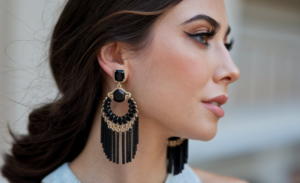drawing:yw-tzomiaao= heart: A Comprehensive Guide
Drawing a heart might seem like a simple task, but there’s much more to it than meets the eye. Whether you’re an artist looking to refine your skills or someone who just wants to add a personal touch to a card, understanding the nuances of drawing a heart can be incredibly rewarding. In this guide, we’ll delve into the art of drawing a heart, exploring everything from basic techniques to creative variations. drawing:yw-tzomiaao= heart
Introduction
Drawing a heart is more than just a romantic gesture; it’s a fundamental skill that can enhance your artistic repertoire. From greeting cards to intricate designs, hearts are versatile symbols of love, affection, and emotion. In this article, we’ll explore how to draw a heart with precision and creativity, ensuring that every stroke conveys the sentiment you wish to express. drawing:yw-tzomiaao= heart
The Basics of Drawing a Heart
Understanding the Shape
At its core, a heart is a combination of two rounded shapes with a triangular point at the bottom. To get started, it’s helpful to break the heart down into simpler components. drawing:yw-tzomiaao= heart
- Draw Two Circles: Begin by drawing two circles side by side, touching each other slightly.
- Create a Triangle: Next, draw a downward-pointing triangle that intersects the bottom of the circles.
- Connect the Shapes: Smoothly connect the top of the triangle with the circles to form the classic heart shape.
This basic heart shape serves as the foundation for more complex and detailed drawings. drawing:yw-tzomiaao= heart
Basic Techniques
- Sketch Lightly: Use a light hand to sketch the basic shape. This allows for easier corrections as you refine the drawing.
- Refine the Outline: Once you’re satisfied with the basic shape, go over the outline with a darker, more defined stroke.
- Erase Guide Lines: Remove any unnecessary guide lines to clean up your drawing. drawing:yw-tzomiaao= heart
Adding Details and Personal Touches
Shading and Coloring
Adding color and shading can elevate a simple heart drawing into a vibrant piece of art. drawing:yw-tzomiaao= heart
- Choose Your Colors: Traditional heart colors include red and pink, but feel free to experiment with other hues.
- Apply Base Color: Start by applying a base color evenly across the heart.
- Add Shading: Use a darker shade of your base color to add depth and dimension. Focus on the areas where light would naturally fall.
- Blend for Smoothness: Blend the colors to avoid harsh lines and create a smooth transition between light and dark areas.
Incorporating Patterns and Textures
To add more interest, consider incorporating patterns and textures into your heart drawing. drawing:yw-tzomiaao= heart
- Patterns: Draw lines, dots, or other shapes within the heart to create patterns. For example, stripes or polka dots can add a fun touch.
- Textures: Experiment with different shading techniques to create textures. Cross-hatching or stippling can give your heart a unique feel. drawing:yw-tzomiaao= heart
Creative Variations
Heart Art in Different Styles
Hearts can be drawn in various styles, each adding its own flair to the traditional shape. drawing:yw-tzomiaao= heart
- Realistic Hearts: Render a heart with realistic details, including veins and shading to mimic an anatomical heart.
- Cartoon Hearts: Opt for a simplified, exaggerated version with bold lines and bright colors.
- Abstract Hearts: Use geometric shapes or unconventional forms to create a more abstract representation of a heart.
Combining Hearts with Other Elements
Hearts can be combined with other elements to create a more elaborate design.
- Hearts and Flowers: Integrate hearts with floral elements for a romantic and delicate look.
- Hearts and Text: Pair a heart with a meaningful phrase or word to enhance the message.
- Hearts in Patterns: Use hearts as part of a larger pattern or design, such as in a border or background.
Digital vs. Traditional Drawing
Digital Techniques
Drawing hearts digitally offers a range of tools and possibilities.
- Software Tools: Utilize digital drawing software like Adobe Illustrator or Procreate, which offer tools for creating precise shapes and applying colors.
- Layering: Take advantage of layers to separate different elements of your drawing and make adjustments easily.
- Effects: Explore digital effects like gradients and textures to enhance your heart drawing.
Traditional Techniques
Traditional drawing methods bring a tactile and personal touch to your art.
- Pencil and Paper: Start with a pencil sketch, then use ink or colored pencils to finalize the drawing.
- Watercolor and Paint: Experiment with watercolors or acrylic paints for a more expressive and fluid heart design.
- Mixed Media: Combine different traditional materials, such as collage or pastels, for a unique and textured look.
Tips for Perfecting Your Heart Drawing
- Practice Regularly: Like any skill, drawing improves with practice. Experiment with different styles and techniques to find what works best for you.
- Study Different Examples: Look at various heart drawings for inspiration and understanding of different approaches.
- Seek Feedback: Share your work with others and be open to constructive criticism to further refine your skills.
Conclusion
Drawing a heart is a fundamental yet versatile skill that can add a personal touch to various art projects. By understanding the basic shape, experimenting with colors and textures, and exploring different styles, you can create heart drawings that are both beautiful and meaningful. Whether you’re working digitally or traditionally, the key is to practice and enjoy the process. So grab your tools and start drawing—your perfect heart is just a few strokes away!







Post Comment